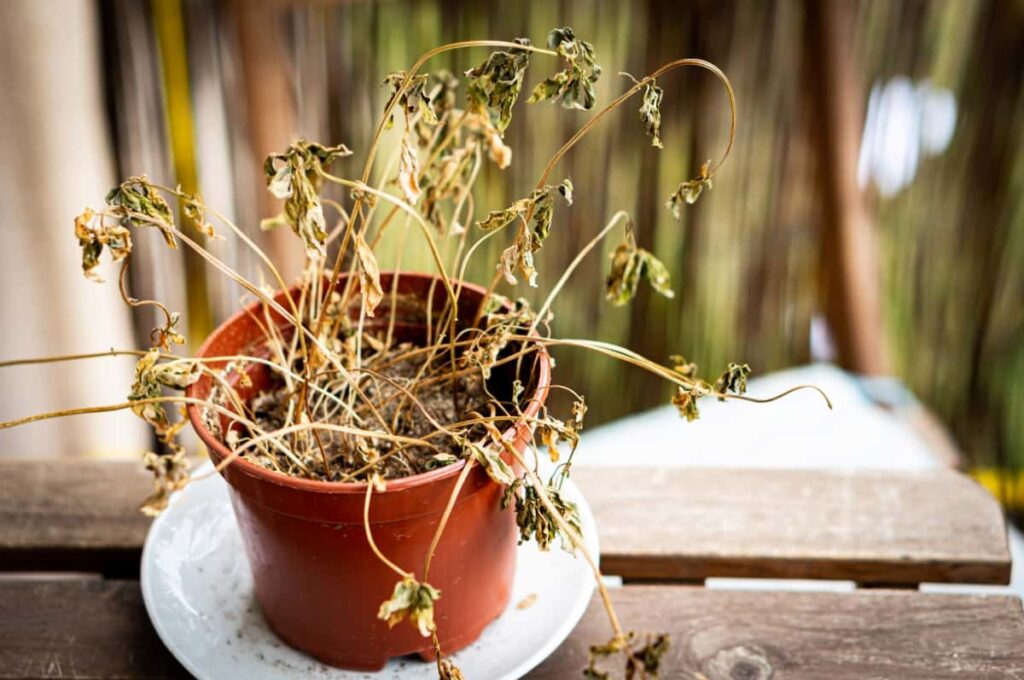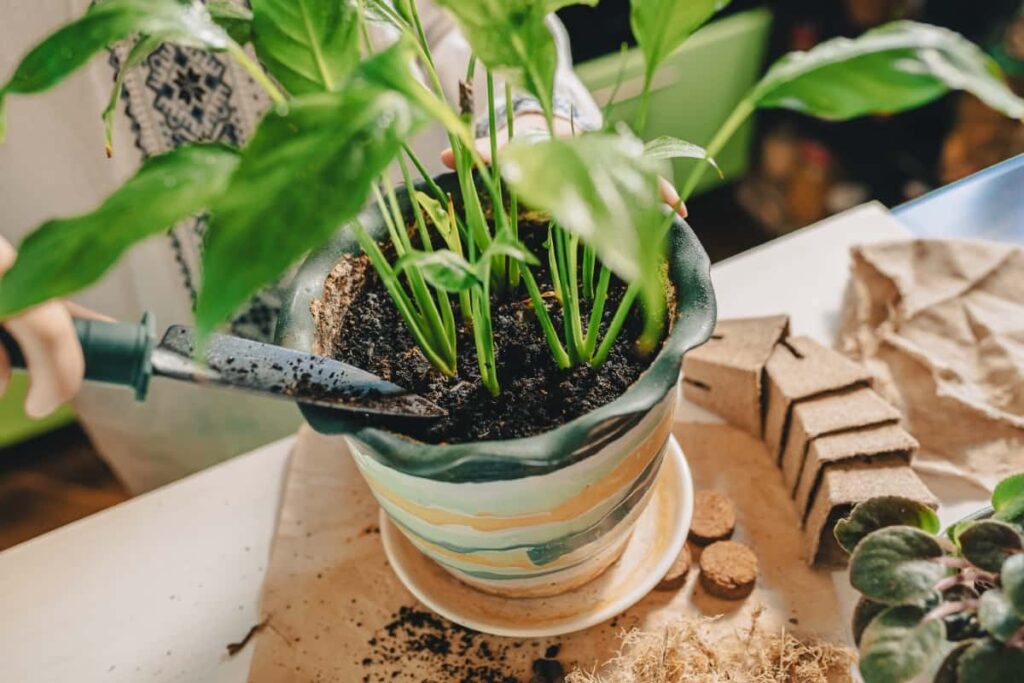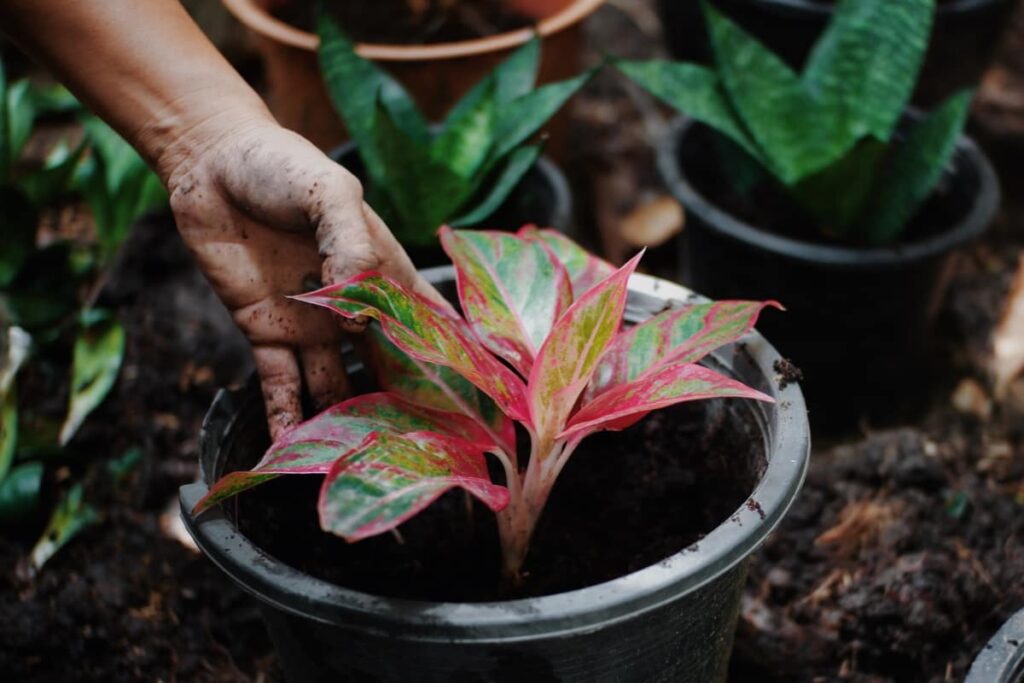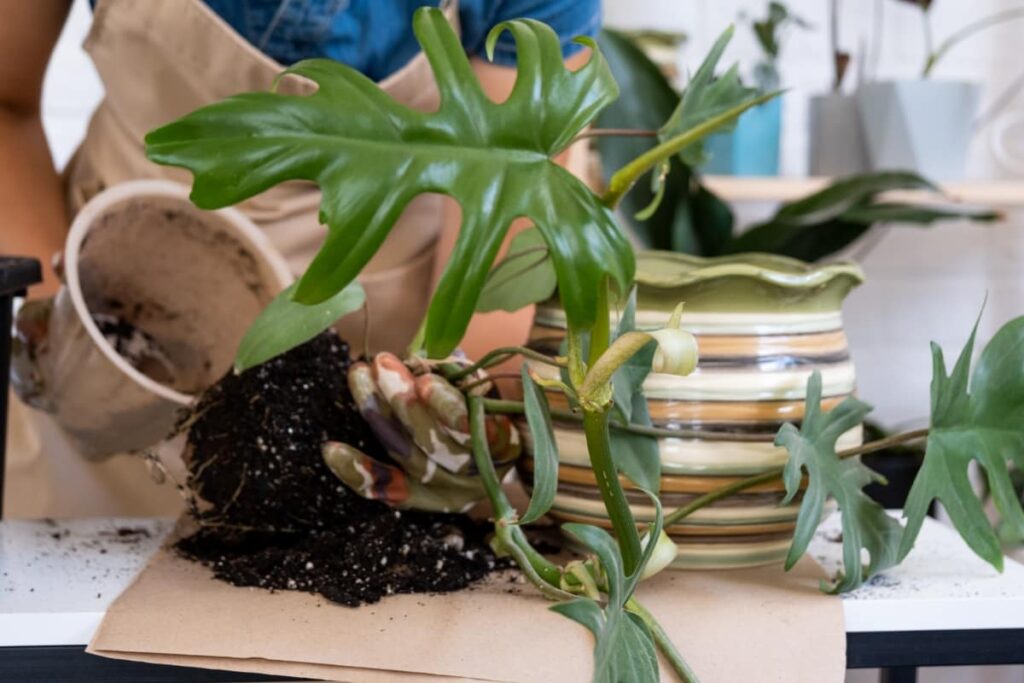Potted plant leaves drying can be a frustrating issue for any plant parent. There are several reasons indoor potted plants can get dried up or look dead. The most common causes of potted plant leaves drying include overwatering, less watering, inadequate sunlight, and pests and bugs. By taking preventive measures for potted plant leaves are drying, you can significantly reduce the risk of encountering dried-up leaves on your beloved potted plants.

10 Reasons Why Your Potted Plant Leaves are Drying
Underwatering
One common reason for dry and wilting leaves could be underwatering. Your plant needs a consistent amount of water to thrive, so neglecting its watering needs can lead to dehydration. Plants rely on water for essential functions like nutrient absorption and photosynthesis. When they don’t receive enough water, their leaves start drying out as a survival mechanism.
To prevent underwatering issues in potted plants, make sure to establish a regular watering schedule based on your plant’s specific needs. Remember that each plant has unique requirements, so pay attention to signs of thirst, such as droopy or crispy leaves.
Overwatering
Overwatering your potted plants can lead to serious issues, including dried-up leaves. When you overwater, the roots suffocate and rot due to lack of oxygen. This hinders their ability to absorb nutrients properly. As a result, the plant shows signs of stress by wilting or yellowing leaves before eventually drying up. To prevent dry leaves in potted plants, always know the soil moisture level before watering again to prevent overwatering.
Low Humidity
Low humidity is a common cause of potted plant leaves drying up. When the air lacks moisture, plants struggle to absorb water through their roots and may show signs of dehydration. Indoor environments, especially during winter or in air-conditioned spaces, can have low humidity levels that impact your plants. To combat low humidity, consider placing a humidifier near your plants or create a pebble tray by filling a dish with water and placing it near the plant.
Misting the leaves occasionally can also help increase moisture around the plant. Certain plant species are more sensitive to low humidity than others. Tropical plants such as orchids thrive in high-humidity environments and may exhibit more severe symptoms when exposed to dry conditions. To increase humidity for your potted plants, consider simple solutions like placing a tray filled with water near the plant or using a humidifier in the room.
Too Much Sun
Having your potted plant basking in the sun may seem like a good idea, but too much of it can lead to drying leaves. Plants need sunlight to thrive, but excessive exposure can cause stress. If you notice your plant’s leaves turning brown or crispy at the edges, it could be a sign of sunburn.
The intense heat from prolonged sun exposure can dehydrate and damage the foliage. To prevent this issue, consider moving your plant to a spot with indirect sunlight or providing some shade during the hottest parts of the day. This small adjustment can make a big difference in maintaining healthy and vibrant foliage.
Nutrient Deficiency
Nutrient Deficiency in potted plants can lead to dry and unhealthy leaves, indicating that your green friend is not getting the necessary vitamins and minerals it craves. If you notice yellowing or browning of potted plant leaves, stunted growth, or leaf drop, it might be time to check on the plant’s nutrient intake. Common nutrients that potted plants may lack include nitrogen, phosphorus, potassium, iron, magnesium, and calcium. Each nutrient application for leaf health plays a crucial role in the plant’s overall health and development.
In case you missed it: 10 DIY Orchid Potting Mix Homemade Recipes

To combat this issue, consider fertilizer use to prevent dry leaves and use a balanced fertilizer specifically formulated for indoor plants. Make sure to follow the instructions on the fertilizer package carefully to avoid overfeeding your plant. Regularly monitoring your plant’s foliage for any signs of deficiency can ensure early intervention and keep your green companion thriving with lush leaves.
Pest Infestation
Pest Infestation can be a sneaky culprit when it comes to your potted plants drying up. Keep an eye out for any unusual spots or webs on the leaves, as these could be signs of drying leaves in potted plants. Inspect both sides of the leaves regularly to catch any unwanted visitors in action. If you spot any pests, act fast to prevent further damage.
There are various natural remedies and commercial insecticides available to help combat pest infestations in your potted plants. Neem oil, insecticidal soap, or even a gentle spray of water can deter these pesky critters from making themselves at home on your beloved plants. Remember that plant pest prevention is key when it comes to pest infestations.
Disease
When it comes to potted plants, diseases can be the main cause of drying leaves. Fungal infections and bacterial diseases are common issues that can wreak havoc on your green friends. Keep an eye out for any unusual spots, discoloration, or wilting of leaves, as these could be signs of a plant disease taking hold. Prevention is key here – make sure to avoid overwatering, improve air circulation around your plants, and inspect them for any signs of trouble.
If you suspect disease is the cause of your plant’s dry leaves, swift action is crucial. Remove affected foliage promptly to prevent the spread of infection. Consider using natural remedies or seek advice from a professional if the problem persists. Remember, early detection and proactive measures are essential in keeping your potted plants healthy and vibrant.
Poor Soil Quality
Having poor soil quality can be a major factor leading to drying leaves in potted plants. The soil is like the foundation of a house, providing essential nutrients and support for your green friends to thrive. When the soil lacks proper nutrients or drainage, it can hinder plant growth and result in dry, unhealthy leaves. Plants need a balanced mix of nutrients present in the soil to stay vibrant and lush. If the soil is depleted or lacks essential minerals, your plants may struggle to absorb what they need, causing their leaves to dry out.
Inadequate drainage due to compacted or heavy soils can lead to waterlogging around the roots, suffocating them and depriving them of oxygen. This water stress can manifest through dried-out leaves as well. Checking your plant’s soil quality regularly by observing its texture and moisture levels is crucial. Consider repotting with fresh, nutrient-rich potting mix if you suspect poor soil quality might be affecting your potted plant’s health.
Root Bound
When a plant becomes root-bound, its roots have outgrown the container they’re in, leading to limited space for growth and nutrient absorption. Root-bound plants can exhibit symptoms like wilting leaves, stunted growth, and overall poor health. To check if your plant is root-bound, gently remove it from its pot and inspect the plant roots. If they appear tightly packed in a circular pattern or protruding from drainage holes, it’s likely root-bound.
In case you missed it: 10 Reasons Why Your Potted Tree is Not Fruiting: Remedies and Treatment for Container Plants

To prevent or address this issue, consider repotting your plant into a larger pot or container with fresh soil. Loosening the roots gently before transplanting can help stimulate new growth and alleviate stress on the plant. By addressing root-binding early on, you can help your potted plant thrive and avoid further leaf drying issues.
Temperature Stress
Temperature stress can be a main cause for your potted plants. Sudden temperature fluctuations, especially extreme heat or cold, can cause the leaves to dry up. During hot summers, make sure your indoor plants are not placed near drafty windows or air conditioning units that can blast them with cold air unexpectedly.
In colder months, avoid placing your plants near heaters or radiators that might dehydrate them. A sudden drop in temperature at night compared to daytime warmth can also stress out your green buddies. If you notice wilting or dried leaves due to temperature stress, consider relocating your plant to a more stable environment where it’s shielded from drastic weather changes.
In case you missed it: 10 Reasons Why Your Potted Plant is Not Blooming: Remedies and Treatment

Conclusion
Potted plant leaves drying is a common problem faced by many indoor gardeners. It refers to the process of leaves becoming dry, crispy, and brown due to various factors such as inadequate watering, poor lighting, pests, or temperature fluctuations. By following the prevention and treatment tips for drying leaves, you can ensure that your potted plants stay healthy and vibrant. Potted plants bring life and vibrancy to any space.
- Crops Grown in Summer Season: Best Choices for Summer Gardening
- Organic Pest Control for Tomato Farming
- How to Maximize Sheep Farming Profit
- Broccoli Varieties: Choosing the Right Cultivars for Your Farm
- How to Raise Pigs in Your Own Backyard: A Comprehensive Guide
- Budget Friendly Sheep Shed Ideas: Cheap and Low-Cost Tips
- How Much Do Cattle Farmers Make: Revenue Streams in Cattle Farming
- Management Pests and Diseases in Your Cotton Field
- Sheep Farming Business Plan for Beginners
